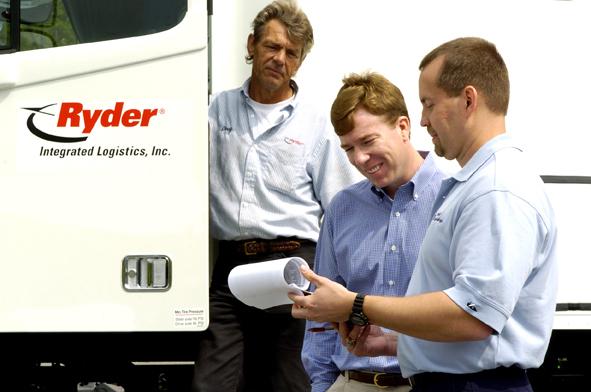Implementing lean concepts into your labor management program can be tricky. Employees can be hesitant to change because of the uncertainty on how it might affect them. So it could take some time and effort to get employees to support the new direction. How do you get employees to become more engaged and involved in continuous improvement programs?
Here are a few suggestions on getting that crucial buy-in from employees:

1) Management Involvement - The workforce needs to see, and I mean physically see, that management is not only involved, but committed to the initiative. Senior leadership should be involved in the initial roll-out of LEAN education, as well as the Kaizen events aimed at standardizing processes and the defining of goals and standards. They should remain engaged thereafter, and even reinforce their commitment by following “Leader Standard Work” and truly participating in the process. What often happens is that you will see a senior leader come into a facility to participate in a kick-off, or simply deliver a message of encouragement at the start of the process, but then not be involved going forward. People see through this, and do not consider it to be true involvement. Senior leaders need to actively participate in the activities and engage with employees at all levels of the organization. For a team supervisor to feel like they have gotten true face time with their leader is a powerful interaction that can shift their perception. They will go back to their teams, promote the culture change, and get their teams to embrace the new program.
2) Positive Feedback – If feedback from management is always negative, the workforce will begin to perceive the program as just another way for management to monitor them, under the pretext of an “initiative”. Management needs to consciously provide positive feedback as well, so the workforce feels they are recognized for good performance as well. In addition, negative feedback needs to be handled carefully. First, negative feedback should be handled more as coaching. Also, never single out an individual in front of their peers. Instead, refer to a “situation” and present feedback to the entire team. This reinforces that the team is “in this together”. If the workforce fears individual retribution, it’s likely they will not fully engage in programs out of concern that they might say or do something that will be detrimental to them.
3) Employee Suggestion Program – Create an employee suggestion program. It’s imperative that entries received are followed up on. Designate an individual that will be responsible for providing immediate feedback to the employee who submitted a suggestion, even if that means just a, “Thank you for your submission. We will review and let you know how we might be able to make improvements.” This goes a long way in making an employee feel like their opinion is valued. Beyond that, make sure to provide feedback on suggestions during shift start meetings. For example, you can take 5 minutes weekly during a shift start meeting to read out suggestions that are being considered, and recognize the employee who submitted them. You can also provide pins or patches for an employee’s safety vest that visibly recognizes participation. If a suggestion is not considered, it’s important to communicate back to the employee why it is not being implemented. This is the only way for an employee to learn what suggestions may or may not work.
4) Correlate the Facility Performance to the “End Goal” – In many cases employees do not understand the end goal. The reason for becoming more productive in a facility is to control operational costs, which ultimately makes your company more profitable or your service more competitive. Other than just publishing improvements on individual and site productivity, also publish a measure of how the overall company (or account) is benefiting from their efforts. For example, publish the performance of that facility compared to others on the network, or something indicating the average operating cost per unit for that facility and its performance over time, etc. The important thing is to create a connection to the overall company, and beyond the four walls.
5) Performance Based Economic Incentives – Opinions vary on this, but in my experience, the biggest motivator for involvement in these programs, is the ability to improve their income and quality of living. Some find that providing economic incentives sends the wrong message because employees should offer high levels of effort and commitment simply because that is the expectation of the job. There are certainly employees with this mentality, which regardless of an economic incentive, are generally very productive because of their own intrinsic motivation. But not everyone is the same, and creating a systematic way of rewarding performance can bring tremendous value. When you reward employees this way, you are not just reinforcing their behavior, but you are also creating a role model for under-performing employees to follow. Managing incentives requires that processes be well documented and have well-defined productivity standards, but again, the rewards can be well worth it.
These are just a few ways you can get employee “buy-in” for a culture change or new labor management program.
What other practices have you found are helpful in engaging employees in new labor management programs?
Written by Mario E. Rivera. Mr. Rivera is a Director of Supply Chain Excellence at Ryder. He is a logistics and engineering professional with 10+ years of experience in supply chain engineering, optimization and solutions design and development, operations and business development. Throughout his career Mr. Rivera has been involved in designing, implementing, and supporting numerous supply chain solutions for Ryder’s customers across a variety of industry segments.

